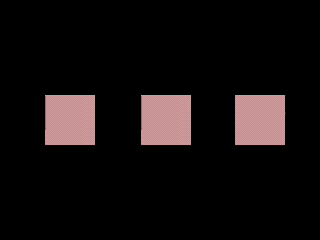Direction
Direction describes the horizontal, vertical or diagonal representation of a figure. Direction of a figure can be actual or implied. Some figures have an explicit direction, such as a pointing arrow. Other figures, such as a group of squares, can be difficult to describe in terms of direction due to the symmetry of they figure.
 Direction can be difficult (even impossible) to define for a circle.
Direction can be difficult (even impossible) to define for a circle.
 Direction can be explicit (in this case, the direction is to the right).
Direction can be explicit (in this case, the direction is to the right).

Direction can be seen in most figures. The bird head has the same direction as the arrow in the previous example (direction is to the right).
As a descriptor, direction for a figure or group of figures can be defined in terms of continuity or discontinuity, consistent or inconsistent, and contrast of direction.

Continuous, consistent.

Discontinuous, inconsistent.

In the above example, the square in the center becomes the primary figure (or focal point) within the sequence because of motion. The motion is a change of direction, rotating clockwise and counterclockwise. During the moments when there is no motion, there is no clear primary figure due to all three squares being fundamentally identical.